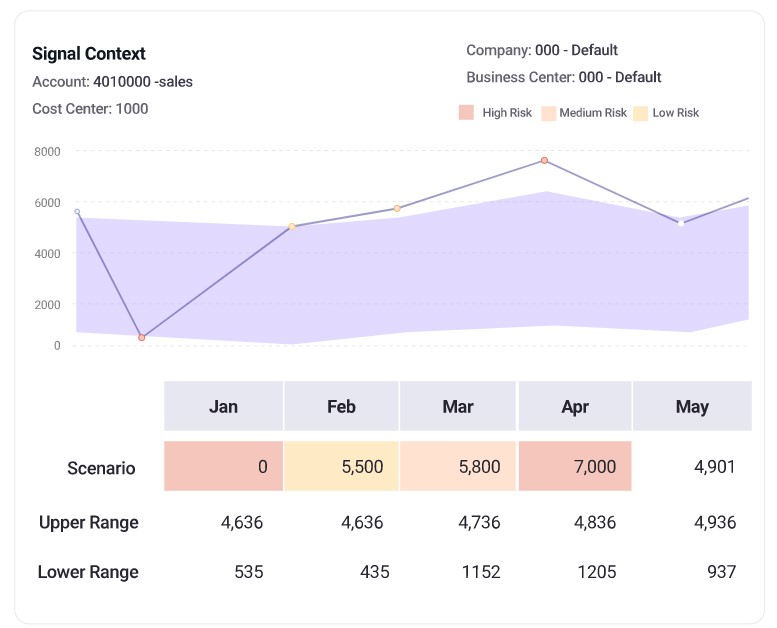Planful Predict portfolio starts with signal detection and forecasts aimed at improving financial and operational planning, but there’s more to come.
Financial and operational planning is all about preparing for future outcomes. The better you can see into the future, the better prepared you will be to proactively respond to whatever comes your way.
Accurate foresight is the promise of Predict: Signals, a new product released June 9 by Planful, the cloud-based financial planning, analysis and consolidation vendor. Predict: Signals has been in private preview with ten Planful customers over the last six months, and June 9 marked general availability to all customers. The promise of this optional new feature is to augment human capabilities by using machine learning (ML) to:
- Surface anomalies, including those that are the root causes of variances from plans
- Identify notable patterns, particularly those that point to risks
- Augment human planning and decision-making efforts with ML-supported analysis of forecasts.
Prediction has been squarely in the domain of data scientists for decades, but in recent years we’ve seen automation and augmentation features designed to democratize these capabilities. AutoML features, for example, are making predictive techniques accessible to data warehouse professionals, while augmented analytics features are doing the same for business intelligence users.
Augmented predictive features are a much more recent phenomenon within the planning space, and they promise to improve the efficiency and effectiveness of financial planning and analysis (FP&A) professionals. Predict: Signals, for example, trains predictive models using customer’s historical data. When trained on at least 36 months of data, Planful says Predict: Signals can apply forward-looking anayses to financial projections and deliver insights with 95%-plus confidence levels.
What happens when part of that history includes an abnormal year, I naturally wondered given the pandemic experience? Planful says the feature’s built-in algorithm can identify sections of data, like those seen during last year’s business swings, that have the potential to skew the model and can normalize that data.
Predict: Signals does its training behind the scenes, without any need for data science expertise on the part of Planful customers. Pricing of this add-on feature is based on the volume of data used for training (as measured in gigabytes), and there a multiple subscription and custom pricing options. Once the model is trained, it will validate any forward looking forecast, checking for abnormalities. Confident forecasts are a great starting point for more realistic, on-target what-if scenario planning, and there’s no limit to the number of scenarios you can analyze.

Predict: Signals highlights forecast values that are at low-, medium- or high-risk of not being realized, supporting variance analysis, replanning and proactive action.
As actual performance data rolls in, Predict: Signals supports variance analysis, spotting risks and the underlying causes of exceptions. It also delivers new sets of predicted values, including upper, lower and median values – good goal posts for base-case, best-case and worst-case planning. The feature won’t make any decisions for the planner – it’s meant to augment and not replace the human -- but it does save them time by surfacing the real problems and risks they should address and the positive surprises they should try to maximize.
Planful has more capabilities on the Predict roadmap, so Planful customers can expect a continuing rollout of new augmented capabilities over the next few years. We’ve seen a similar pattern of machine-assisted features gaining traction in the BI and analytics space in recent years, and it has helped those platforms reach a wider community of users. I’m eager to see whether computer-augmentation will help accelerate the move of planning into sales, human resources and other operational areas.


